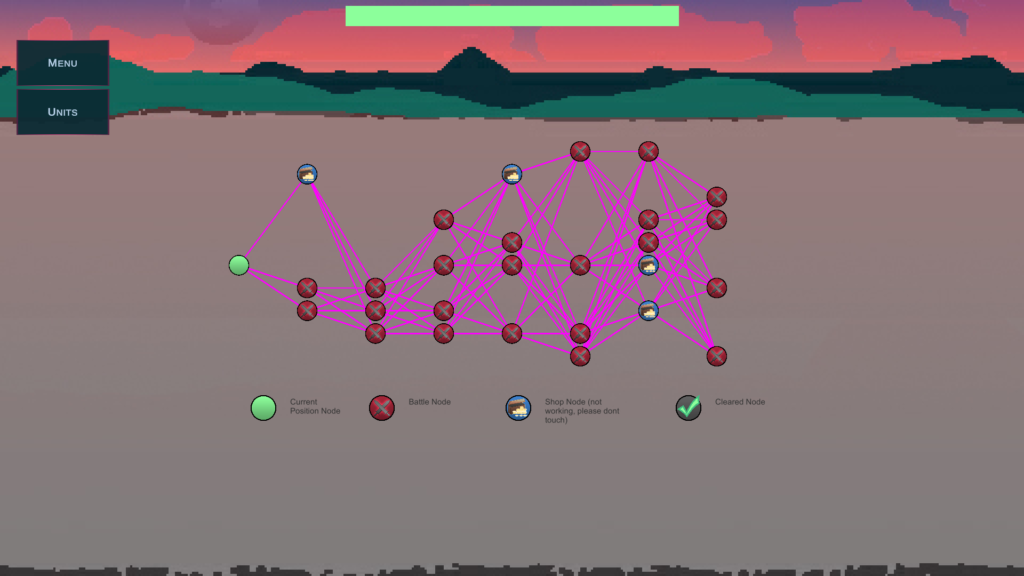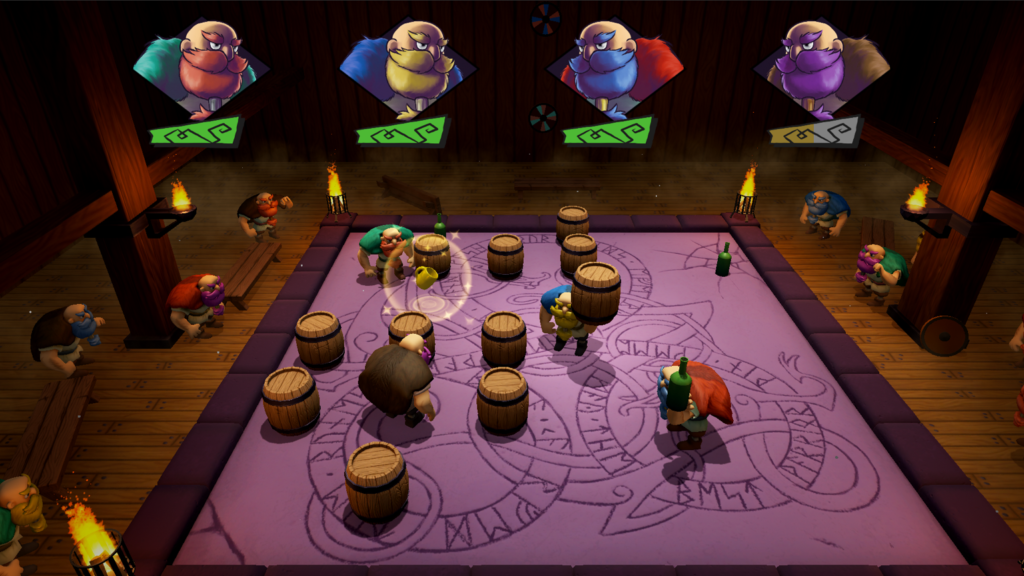
Team KittyPup
Eppu Syyrakki – programmer
Terhi Salonen – programmer
Frida Brander – graphic designer
Janika Keskitalo – graphic designer
Allan Castellanos – audio design
Game Idea
Concept: Small-scale platformer of a tiny sandman in a big room fighting shadows.
When we started thinking about what we would like to make as our bigger project we discussed the types of games that we enjoyed and what ideas could be easily formed into something bigger slowly and steadily. The first thought was of a sandman or a child fighting ghosts in the closet, and how we could create that into a platformer of some kind. Slowly the idea developed into a small sandman who could fight off little ghosts and the bogeyman “Maere”. As our inspiration we saw Little Nightmares and Limbo. We found that this idea gave us a lot of opportunities to go free in our thoughts.

Game Development
Night of the Maere was developed it the timespan of six weeks, with a team of newbies. Prior to this project we had worked on together for about four weeks, except for Allan, who joined the team during Night of the Maere project. These are our testimonies regarding the development.

Frida (Background props and graphics)
As a 2D artist it was a good thing our team started with games that required 2D graphics. After couple games we decided to develop our first 3D game. For my surprise it was not that difficult to switch from 2D to 3D graphics. Our team had a very good coordination and every game was delivered on time.
Regarding Maere, creating the background props and graphics was enjoyable yet sometimes challenging. Having no experience with unity beforehand, it took me couple hours of trial and error, and some help from my other team members before everything started to go on smoothly. With our lovely team working together it was no challenge to put together an aesthetic atmosphere that would work with the game.
Janika (Character design and graphics)
I hopped onto a team as an artist and we made simple games for the first month, trying out 2D and 3D graphics. It was quite fun learning new programs and ways of working as I had never made games myself before! I appreciated the Discord group and the help channels whenever I ran into problems, most being very simple mistakes, and easily fixed. The support was also great from my teammates during the progress. I enjoyed picking up on ideas each week to do sketching always traditionally in my sketchbook and then hopping to digital media to make some mock-ups and then further go through with the designs.
Eppu (Character and level development and scripting)
My strength in the team turned out to be some pre-knowledge of how Unity works. I had followed a few tutorial projects by myself, so at the start I concentrated my efforts to creating a system for character movement in the game. This turned out to be easier said than done, since I delved a little too deep into state machines and discovered that the Unity animator is a state machine in itself, and that it would be relatively easy to repurpose the machine to work as a character controller. It was, but as we started to add actual animations to characters, using one controller for abstract character states and another for animations turned out to be a real mind twister, especially so since the animations and states didn’t match 1:1. I ended up trashing most of the original 2-machine system and incorporating most of the original player state machine behaviours directly into the actual animation controller. The end result was something between a state-machine and a bunch of if-statements.
For example, the player can deploy a light that is done completely outside the state machine, since the light needed to stay on if the character changes states. Meanwhile the enemies in the game are done completely inside the state machine behaviours.
Terhi (UI and UX development and scripting)
With Night of The Maere I focused mostly on user interface and user experience stuff. So, I worked on the menus and their innards, with memory management and preload things, and eventually with audio implementing and controlling. With the autosave I worked on, there emerged a problem regarding continue game scenario. As the autosave relies heavily onto events, I realized I had to be more specific with the event triggers. Although huge part of what I did for the project was at least on some level new to me, learning the audio implementing and controlling was the one part that I got most anxious and eventually most excited about. We decided to use FMOD as the audio source, and I am very happy about this, even if I got wee bit overwhelmed with it all at first. I admit that in the end I enjoyed vastly solving issues I confronted. My mistakes revolved mostly around events, to be specific, in their subscription part. I know I understand some of it, but there are still things to learn.
Allan (Audio design)
Hi, my name is Allan Castellanos, and it is my first time at the game academy. My dream of learning how to implement music and sound effects in video games started this summer! Downloading and installing many gigabytes of new software, watching, and following audio tutorials were just the beginning of this new adventure.
A team was looking for a solid audio person, and I quickly became very interested in the game because of the game idea and the atmosphere they wanted to create “magic and fantasy”. After the first meeting via Discord, I got a list of sounds that may be necessary in the game and what kind of music could be good for the game. My idea for the music was to create something that sounds magical and deep and a little bit retro. So, I decided to give a try to my modular and play some random chords. For the foil sounds, I asked a friend if we I could use his studio because he has a collection of “weird” instruments, so I could try to create unique sounds, the recording was mainly inside a closet filled with blankets. In the end we got a great collection of sounds with greatquality that my team could use.

A Mare (Old English: mære, mara in Old High German, Old Norse, and Swedish) is a malicious entity in Germanic and Slavic folklore that rides on people’s chests while they sleep, bringing on bad dreams. And now it is here, in that room.



























